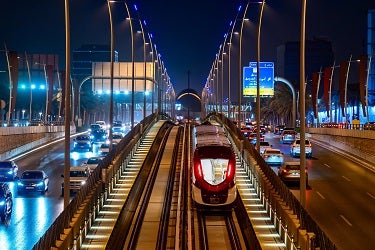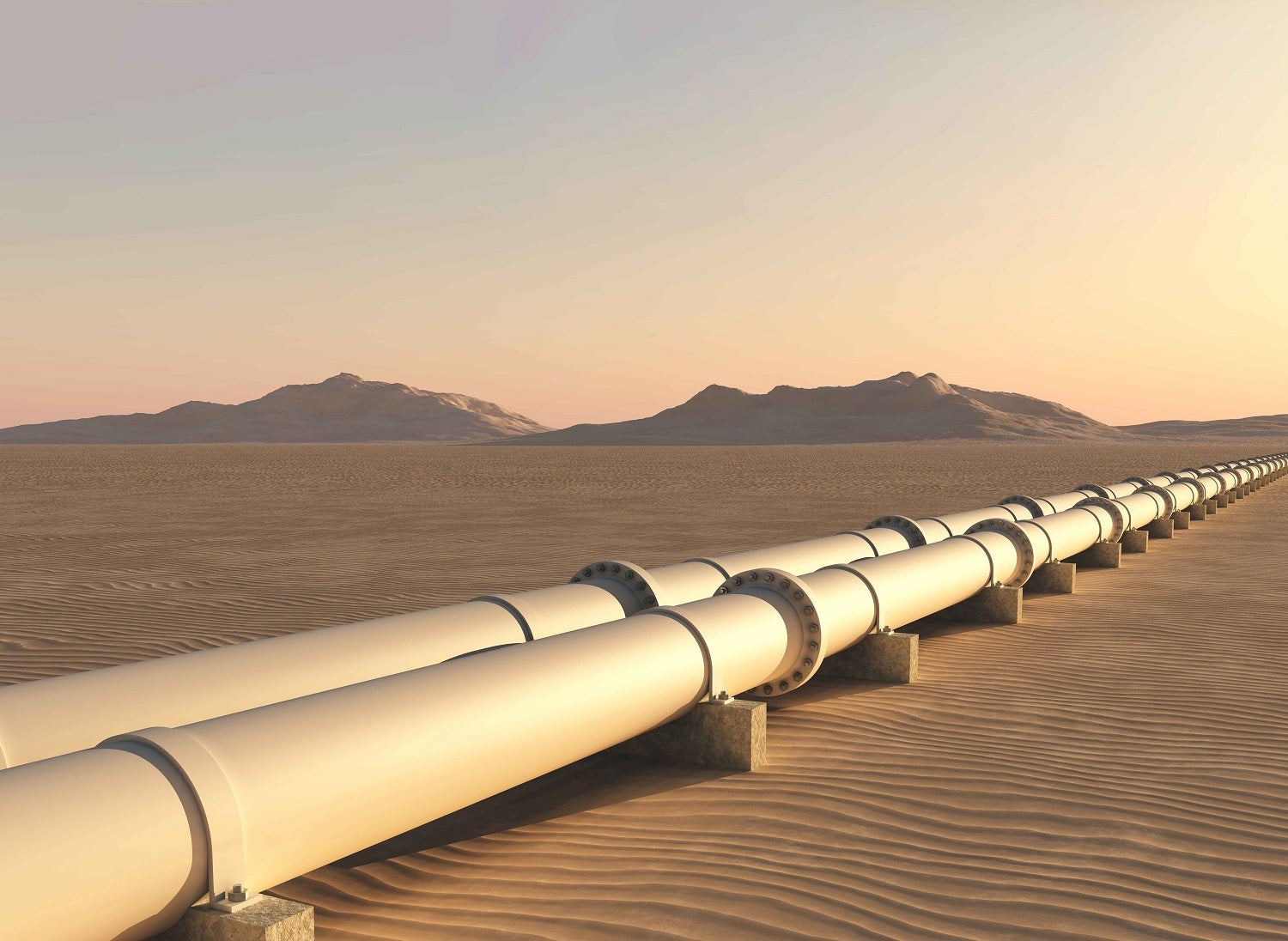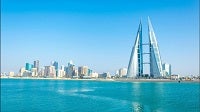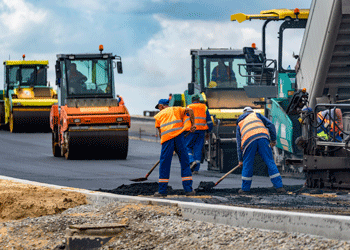Hail and Ghasha galvanises UAE upstream market
12 October 2023
 This package on the UAE’s upstream sector also includes:
This package on the UAE’s upstream sector also includes:
> Adnoc seeks commercial bids for Upper Zakum
> Adnoc Onshore awards Sahil field upgrade contract
> Dubai-owned Dragon Oil to boost production in Egypt and Iraq
> Oil and gas players at Adipec strive for net-zero goals
> Adnoc awards $17bn EPC contracts for Hail and Ghasha
> Dana Gas makes changes to leadership

The UAE has made a giant leap towards becoming self-sufficient in natural gas production with Abu Dhabi National Oil Company's (Adnoc's) final investment decision on the Hail and Ghasha offshore sour gas project.
Adnoc and its partners in the Ghasha concession awarded contracts worth $16.94bn in early October for engineering, procurement and construction (EPC) works on the Hail and Ghasha project.
The investment represents the largest-ever capital expenditure (capex) on an oil and gas project in the UAE. As such, it will have a galvanising, trickle-down effect on the UAE oil and gas supply chain.
Hail and Ghasha programme
The Hail and Ghasha fields are part of Abu Dhabi’s Ghasha concession, which is expected to produce more than 1.5 billion cubic feet a day (cf/d) of gas before the end of this decade.
Adnoc holds the majority 55 per cent stake in the Ghasha concession. The other stakeholders are Italian energy major Eni with 25 per cent, Germany’s Wintershall Dea with 10 per cent, and Austria’s OMV and Russia’s Lukoil, each with 5 per cent.
A consortium of Abu Dhabi’s National Petroleum Construction Company (NPCC) and Italian contractor Saipem was awarded the project's offshore engineering, procurement and construction (EPC) package. Its value is $8.2bn, with Saipem declaring its share to be worth $4.1bn.
The scope of work broadly involves the EPC of offshore facilities, including facilities on artificial islands and subsea pipelines.
Italy-headquartered Tecnimont was awarded the onshore EPC contract. The $8.74bn contract relates to the EPC of onshore facilities, including carbon dioxide (CO2) and sulphur recovery and handling.
The Hail and Ghasha project was initiated by Adnoc in 2018, with at least three EPC tendering rounds since. Its size and scope made it a vastly strategic proposition, hence shelving the gas production programme was not an option.
Through achieving the FID and awarding close to $17bn-worth of EPC contracts, Adnoc and its Ghasha concession partners have demonstrated the project's importance in ensuring the UAE is self-sufficient in gas by 2030.
NEWS FROM ADIPEC:
> Adnoc doubles 2030 carbon capture target
> Adnoc Gas awards $615m carbon capture contract
> Adnoc and Oxy to study direct air capture project
> Firms bid for Abu Dhabi airport tank farms project
> Sharjah and Ras al-Khaimah sign gas storage deal
Oil production push
Adnoc is also accelerating projects deemed vital to reaching its goal of 5 million barrels a day (b/d) of oil production potential by 2027, a target that has been brought forward from 2030.
Raising output from Abu Dhabi’s offshore oil fields is necessary for Adnoc to increase its overall crude production capacity. With this in mind, the Abu Dhabi energy giant has committed capex to key projects to raise output from the Upper Zakum and Lower Zakum offshore hydrocarbon concessions.
Through the UZ1000 project, Adnoc Group subsidiary Adnoc Offshore aims to grow oil production from Upper Zakum to 1.2 million b/d.
The main work scope involves the EPC of multiple surface facilities and plants at the Upper Zakum offshore development’s four main artificial islands of Al-Ghallan, Umm al-Anbar, Ettouk and Asseifiya – also known as Central Island, West Island, North Island and South Island, respectively.
Contractors submitted technical bids for EPC works on the Upper Zakum oil production increment project by 5 June. Adnoc Offshore has set a deadline of 23 October to submit commercial bids for the project.
Separately, Adnoc Offshore has undertaken a couple of projects to increase oil and gas production from the Lower Zakum field in Abu Dhabi’s waters.
Adnoc Offshore and its partners in the Lower Zakum concession intend to sustain oil production from the asset at its current level of 450,000 b/d until 2025, and then increase output to 470,000 b/d. This target will be achieved through the Lower Zakum early production scheme 2 (EPS 2) and proved developed producing (PDP) project.
Contractors submitted technical bids for the EPC works on the Lower Zakum EPS 2/PDP project by 11 September. While the EPS 2/PDP project is anticipated to increase the Lower Zakum concession’s oil production potential to 470,000 b/d by 2027, Adnoc Offshore’s larger, longer-term objective is to raise the asset’s output capacity to 520,000 b/d by 2027 and maintain that level until 2034.
This strategic goal will be accomplished through the Lower Zakum Long-Term Development Plan (LTDP-1) project. Front-end engineering and design (feed) work is progressing on the Lower Zakum LTDP-1 project and is being performed by France’s Technip Energies.
Onshore oil output
Adnoc Onshore, meanwhile, has started a slew of projects to spike crude output from fields such as Asab, Bab, Northeast Bab, Bu Hasa, Mender, Qusahwira, Sahil and Shah.
An EPC contract, estimated to be worth more than $300m, for the third development phase of the Sahil oil field was recently awarded by Adnoc Onshore to local contractor Target Engineering Construction Company.
Another project being pursued by Adnoc Onshore relates to the conversion of wells and installation of associated tie-ins at the southeast cluster of oil fields in Abu Dhabi. The EPC scope of work has been divided into two packages, with technical bids submitted by contractors in August.
Increasing production from Abu Dhabi’s onshore fields, some of which have been in operation since the 1960s, is equally crucial for Adnoc to hit its 5 million b/d by 2027 target. The capacity enhancement projects that Adnoc Onshore has been advancing indicate the importance its parent entity attaches to maintaining and raising output from its onshore assets.
Exclusive from Meed
-

-

-
 Bahrain and US sign nuclear energy agreement
Bahrain and US sign nuclear energy agreement17 July 2025
-
 Kuwaiti firm wins $53m Duqm coastal road contract
Kuwaiti firm wins $53m Duqm coastal road contract17 July 2025
-

All of this is only 1% of what MEED.com has to offer
Subscribe now and unlock all the 153,671 articles on MEED.com
- All the latest news, data, and market intelligence across MENA at your fingerprints
- First-hand updates and inside information on projects, clients and competitors that matter to you
- 20 years' archive of information, data, and news for you to access at your convenience
- Strategize to succeed and minimise risks with timely analysis of current and future market trends

Related Articles
-
 Riyadh Royal Commission awards metro Line 2 extension
Riyadh Royal Commission awards metro Line 2 extension18 July 2025

Register for MEED’s 14-day trial access
Saudi Arabia’s Royal Commission for Riyadh City (RCRC) has awarded an estimated $800m-$900m contract to build the next phase of the Riyadh Metro project, which is the Line 2 extension.
The contract was awarded to the Arriyadh New Mobility Consortium.
The Line 2 extension is 8.4 kilometres (km) long, of which 1.3km is elevated and 7.1km is underground. It includes five stations – two elevated and three underground.
It will run from where Line 2 currently ends at King Saud University (KSU) and then travel onwards to new stations at KSU Medical City, KSU West, Diriyah East, Diriyah Central, where it interchanges with the planned Line 7, and then finally to Diriyah South.
According to the consortium’s official website, the consortium members include Italy’s Webuild, India’s Larsen & Toubro, locally based Nesma & Partners, Japan’s Hitachi, Italy’s Ansaldo STS, the Canadian firm Bombardier, Spain’s Idom and WorleyParsons from Australia.
In 2013, the Arriyadh New Mobility Consortium secured Riyadh Metro’s Line 3 project for $5.21bn.
Line 3, also known as the Orange Line, stretches from east to west, from Jeddah Road to the Second Eastern Ring Road, covering a total distance of 41km.
Riyadh Metro
Riyadh Metro’s first phase features six lines with 84 stations.
The RCRC completed the phased rollout of the Riyadh Metro network when it started operating the Orange Line on 5 January.
In December last year, the RCRC started operating the Red Line and Green Line.
The Red Line, also known as Line 2, stretches 25.1km from the east of Riyadh to the west, via King Abdullah Road, connecting King Fahd Sports City and King Saud University. It has a total of 15 stations.
The Green Line, also known as Line 5, extends 13.3km from King Abdullah Road to the National Museum. With 12 stations, it serves several ministries and government agencies, including the Defence Ministry, the Finance Ministry and the Commerce Ministry, as well as other areas.
Earlier in December, the RCRC started operating the Blue Line (Line 1), Yellow Line (Line 4) and Purple Line (Line 6).
The Blue Line connects Olaya Street to Batha; the Yellow Line runs along King Khalid International Airport Road; while the Purple Line connects Abdul Rahman Bin Awf Road with Al-Sheikh Hassan Bin Hussain Road.
King Salman Bin Abdulaziz Al-Saud inaugurated the Riyadh Metro on 27 November last year.
The network spans 176km. Four of the stations have been designed by signature architects.
The metro is part of the Riyadh Public Transport Project, which encompasses metro and bus systems. The project aims to relieve traffic congestion.
The $23bn project was scheduled to open in 2018, but construction activity slowed due to disputes over prolongation and the disruption caused by the Covid-19 pandemic.
The RCRC awarded the main construction packages for the scheme on 28 July 2013.
In November 2022, the RCRC struck a deal with three contracting consortiums working on the Riyadh Metro scheme regarding the completion of the project’s remaining works.
The Fast consortium won lines 4, 5 and 6, reportedly valued at $7.82bn. The Bacs consortium was awarded lines 1 and 2 for $9.45bn, while Arriyadh New Mobility secured Line 3 for $5.21bn.
US firm Bechtel leads the Bacs consortium. Italian firm Ansaldo STS is the leader of the Arriyadh New Mobility group, and Spanish firm FCC Construccion heads the Fast consortium.
AtkinsRealis has delivered programme management and supervision services for the operations and maintenance of the Riyadh Metro scheme.
https://image.digitalinsightresearch.in/uploads/NewsArticle/14289337/main.jpg -
 Firms submit bids for Maaden gold project water pipeline
Firms submit bids for Maaden gold project water pipeline17 July 2025

Saudi Arabian Mining Company (Maaden) has received proposals from local firms for a water pipeline network it plans to build as part of a larger project to develop a new gold mining and processing facility in the Al-Rjum region of the kingdom.
The Al-Rjum gold mining and processing facility, located in Medina province, is expected to be commissioned by the end of 2027. It will become the largest gold mining operation in Saudi Arabia when operational.
According to sources, the pipeline is to be developed using a build-own-operate-transfer (BOOT) model. The engineering, procurement and construction (EPC) works will have a duration of 38 months, followed by a 20-year operations and maintenance period.
Lamar Holding and Alkhorayef are understood to be the only bidders for the proposed Taif to Al-Rjum water pipeline, which forms package B of the Maaden gold mining project.
The two contractors submitted bids for the water pipeline project on 1 July, sources told MEED.
The main scope of work involves building a 150-kilometre pipeline that will supply treated sewage effluent water to the Al-Rjum gold mining facility.
ALSO READ: Saudi Arabia issues mining exploration licences
The Al-Rjum gold mining and processing facility will have an output capacity of 250,000 ounces of gold a year. The project will increase Maaden’s total gold production to 700,000 ounces a year by 2028, helping the company support Saudi Arabia’s overall goal of doubling gold production by 2030 and achieving a four-fold increase in output by 2040.
MEED recently reported that Maaden had received bids for a tender to develop accommodation facilities for over 4,500 of its workers at the upcoming Al-Rjum gold mining and processing facility.
Bids for the Al-Rjum worker accommodation tender, which is also under the BOOT model, were submitted in late June. The operations and maintenance period for this contract is 15 years.
ALSO READ: Saudi Arabia and Oman open up their minerals potential
https://image.digitalinsightresearch.in/uploads/NewsArticle/14284263/main3503.jpg -
 Bahrain and US sign nuclear energy agreement
Bahrain and US sign nuclear energy agreement17 July 2025
Bahrain and the US have signed a cooperation agreement covering the field of peaceful nuclear energy.
The agreement aims to enhance collaboration in nuclear energy, recognising its vital role in sustainable development and energy security. It aligns with Bahrain's ambitious goal of achieving carbon neutrality by 2060 and contributes to global efforts to combat climate change.
As Bahrain explores alternative energy sources, senior officials have previously indicated to MEED that they are closely monitoring developments in small modular reactor (SMR) technology. This is particularly crucial for Bahrain, where limited land availability poses challenges for solar energy projects. Floating solar plants have been identified as a potential solution, but the exploration of nuclear energy and SMRs remains a priority for future energy diversification.
The agreement was signed during an official visit to the US by Prince Salman Bin Hamad Al-Khalifa, the crown prince and prime minister of Bahrain.
The agreement was formalised by Abdullatif Bin Rashid Al-Zayani, Bahrain’s minister of foreign affairs, and Marco Rubio, the US secretary of state.
Al-Zayani added that the agreement builds upon the Comprehensive Security Integration and Prosperity Agreement (C-SIPA) signed in 2023. The agreement aims to strengthen cooperation in defence, security, emerging technologies, trade and investment.
 READ THE JULY 2025 MEED BUSINESS REVIEW – click here to view PDF
READ THE JULY 2025 MEED BUSINESS REVIEW – click here to view PDFUAE and Turkiye expand business links; Renewed hope lies on the horizon for trouble-beset Levant region; Gulf real estate momentum continues even as concerns emerge
Distributed to senior decision-makers in the region and around the world, the July 2025 edition of MEED Business Review includes:
> AGENDA: UAE-Turkiye trade gains momentum> INTERVIEW 1: Building on UAE-Turkiye trade> INTERVIEW 2: Turkiye's Kalyon goes global> INTERVIEW 3: Strengthening UAE-Turkiye financial links> INTERVIEW 4: Turkish Airlines plans further growth> CURRENT AFFAIRS: Middle East tensions could reduce gas investments> GCC REAL ESTATE: Gulf real estate faces a more nuanced reality> PROJECTS MARKET: GCC projects market collapses> INTERVIEW 5: Hassan Allam eyes role in Saudi Arabia’s transformation> INTERVIEW 6: Aseer region seeks new investments for Saudi Arabia> LEADERSHIP: Nuclear power makes a global comeback> LEVANT MARKET FOCUS: Levant states wrestle regional pressures> GULF PROJECTS INDEX: Gulf projects index continues climb> CONTRACT AWARDS: Mena contract award activity remains subdued> ECONOMIC DATA: Data drives regional projects> OPINION: A farcical tragedy that no one can endTo see previous issues of MEED Business Review, please click herehttps://image.digitalinsightresearch.in/uploads/NewsArticle/14281751/main.jpeg -
 Kuwaiti firm wins $53m Duqm coastal road contract
Kuwaiti firm wins $53m Duqm coastal road contract17 July 2025
Kuwaiti contractor Combined Group Contracting Company (CGCC) has won a RO20.6m ($53m) contract to construct coastal roads in Duqm.The scope of work covers the construction of roads with a total length of 14 kilometres, including a coastal road, a proposed service road, an extension to an existing service road, a resort street, four roundabouts, future extensions and proposed links.
The contract duration is two years from the start date of construction.
MEED reported in August 2023 that CGCC had emerged as the lowest bidder for the project.
GlobalData estimates that the construction industry in Oman will grow by 3.6% in real terms in 2025, supported by rising foreign direct investment (FDI) in the country, particularly in the manufacturing sector, as well as investment in the energy and transport sectors.
The infrastructure construction sector is estimated to grow by 5.7% in 2025, before recording an annual average growth of 5.2% between 2026 and 2029, supported by the government’s investment in upgrading road and airport infrastructure.
CGCC’s contract win in Oman comes shortly after a key contract win in the UAE, worth AED685m ($186m).
The scope of work under this contract encompasses the upgrade works on Emirates Road, from the Al-Badea intersection in Sharjah to the E55 intersection in Dubai.
The UAE’s Ministry of Energy & Infrastructure is the project client.
The contract duration is 25 months.
 READ THE JULY 2025 MEED BUSINESS REVIEW – click here to view PDF
READ THE JULY 2025 MEED BUSINESS REVIEW – click here to view PDFUAE and Turkiye expand business links; Renewed hope lies on the horizon for trouble-beset Levant region; Gulf real estate momentum continues even as concerns emerge
Distributed to senior decision-makers in the region and around the world, the July 2025 edition of MEED Business Review includes:
> AGENDA: UAE-Turkiye trade gains momentum> INTERVIEW 1: Building on UAE-Turkiye trade> INTERVIEW 2: Turkiye's Kalyon goes global> INTERVIEW 3: Strengthening UAE-Turkiye financial links> INTERVIEW 4: Turkish Airlines plans further growth> CURRENT AFFAIRS: Middle East tensions could reduce gas investments> GCC REAL ESTATE: Gulf real estate faces a more nuanced reality> PROJECTS MARKET: GCC projects market collapses> INTERVIEW 5: Hassan Allam eyes role in Saudi Arabia’s transformation> INTERVIEW 6: Aseer region seeks new investments for Saudi Arabia> LEADERSHIP: Nuclear power makes a global comeback> LEVANT MARKET FOCUS: Levant states wrestle regional pressures> GULF PROJECTS INDEX: Gulf projects index continues climb> CONTRACT AWARDS: Mena contract award activity remains subdued> ECONOMIC DATA: Data drives regional projects> OPINION: A farcical tragedy that no one can endTo see previous issues of MEED Business Review, please click herehttps://image.digitalinsightresearch.in/uploads/NewsArticle/14281451/main.gif -
 Algeria awards $855m contract for gas production project
Algeria awards $855m contract for gas production project17 July 2025
Register for MEED’s 14-day trial access
Algeria’s national oil and gas company Sonatrach has awarded an $855m contract to China’s Jereh Group for a project to develop facilities at the Rhourde Nouss gas field.
Jereh Group said that its subsidiary Jereh Oil & Gas Engineering will build a natural gas booster station in the Rhourde Nouss gas field and upgrade and renovate related transmission pipelines.
The Yantai-based company cited a letter of award from Sonatrach and said that the contract will boost the company's footprint in North Africa’s oil and gas engineering service sector.
The Rhourde Nouss boosting project will centralise the boosting of natural gas produced by the gas field and the adjacent Gassi Touil gas field, to improve their production efficiency and natural gas processing capacity, the company said.
Sonatrach, the largest gas producing company in Africa and the largest state-owned enterprise in Algeria, will pay $629.1m and $226m for the construction of the project, Jereh said.
Jereh's growing footprint
Jereh has been expanding overseas in recent years and has won contracts with major Middle Eastern oil and gas clients, including Saudi Aramco, Abu Dhabi National Oil Company (Adnoc) and Kuwait Petroleum Corporation.
In June 2021, the company was awarded a contract for the design, procurement and construction of a gas debottlenecking project in Algeria.
The project was located in the Bir Rebaa Nord and Rhourde Ouled Djemma fields, which are located in the eastern Algerian desert, about 300 kilometres southeast of Hessi Messaoud.
The client on that project was Groupement Sonatrach Eni, a joint venture of Sonatrach and Italian energy company Eni.
 READ THE JULY 2025 MEED BUSINESS REVIEW – click here to view PDF
READ THE JULY 2025 MEED BUSINESS REVIEW – click here to view PDFUAE and Turkiye expand business links; Renewed hope lies on the horizon for trouble-beset Levant region; Gulf real estate momentum continues even as concerns emerge
Distributed to senior decision-makers in the region and around the world, the July 2025 edition of MEED Business Review includes:
> AGENDA: UAE-Turkiye trade gains momentum> INTERVIEW 1: Building on UAE-Turkiye trade> INTERVIEW 2: Turkiye's Kalyon goes global> INTERVIEW 3: Strengthening UAE-Turkiye financial links> INTERVIEW 4: Turkish Airlines plans further growth> CURRENT AFFAIRS: Middle East tensions could reduce gas investments> GCC REAL ESTATE: Gulf real estate faces a more nuanced reality> PROJECTS MARKET: GCC projects market collapses> INTERVIEW 5: Hassan Allam eyes role in Saudi Arabia’s transformation> INTERVIEW 6: Aseer region seeks new investments for Saudi Arabia> LEADERSHIP: Nuclear power makes a global comeback> LEVANT MARKET FOCUS: Levant states wrestle regional pressures> GULF PROJECTS INDEX: Gulf projects index continues climb> CONTRACT AWARDS: Mena contract award activity remains subdued> ECONOMIC DATA: Data drives regional projects> OPINION: A farcical tragedy that no one can endTo see previous issues of MEED Business Review, please click herehttps://image.digitalinsightresearch.in/uploads/NewsArticle/14278458/main.jpg

